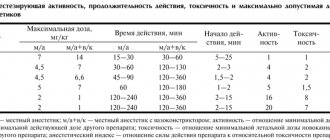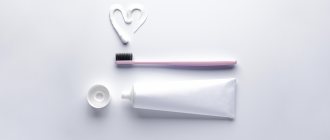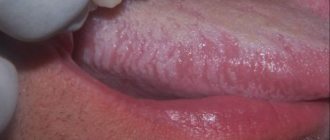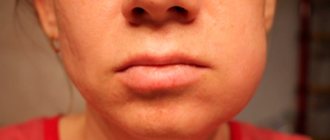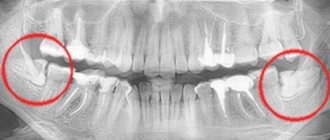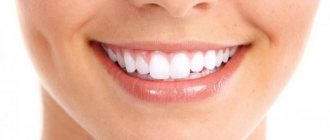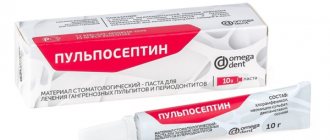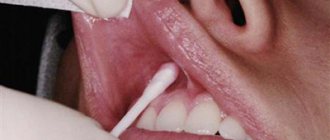707
More recently, visiting the dentist has been associated with pain, panic, discomfort and stress. Now everything has changed.
Pharmacology offers many drugs that help carry out any dental procedure or treatment painlessly.
In their work, dentists often resort to local anesthesia. One of the painkillers that has earned the trust of doctors and patients is Lidoxor.
Purpose and forms of release
Lidoxor is an anesthetic drug containing lidocaine as the main active ingredient. The direct purpose of the drug is pain relief.
In dental practice it is used:
- For topical anesthesia.
- When disinfecting the oral cavity.
- In order to reduce the likelihood of irritation (which is especially important for patients prone to allergies).
The medicine has a pleasant smell and taste and does not cause negative sensations or discomfort during dental procedures.
Typically used before an anesthetic injection to minimize pain and discomfort from needle insertion . It exhibits its maximum effect 5-7 minutes after treatment of the mucous membrane.
Available in two forms - spray and gel. The composition and pharmacological properties remain unchanged, only the method of use and the type of flavoring additives added change. The spray is produced in 30 ml containers, the gel is produced in 45 g tubes.
Composition and pharmacological properties
Lidocaine is a substance known for its deep and rapid-onset analgesic effect. Thanks to the component in the drug, the painful and unpleasant sensations that develop during the procedures disappear completely.
In addition, the composition contains aromatic compounds (apple, citrus, wild berries), providing a pleasant aftertaste.
Complete composition of the medicine from the instructions:
- lidocaine – 15%;
- distilled water;
- sorbitol;
- sodium benzoate;
- xylitol;
- menthol;
- thymol;
- poly 1-vinyl-2-pyrrolidone;
- glycerol;
- 2,6-dimethyl;
- aromatic additives.
Additional components include yarrow, chamomile (their extracts), and saccharin.
The main purpose of Lidoxor is pain relief. Its action is sufficient to relieve pain and other negative sensations when performing any dental procedure.
A similar effect occurs due to the blockade of pain impulses transmitted by nerve endings to the brain. The result of use occurs within 1-2 minutes from the moment of application, and lasts up to 20 minutes.
This time is enough for the dentist to inject a more potent anesthetic into the gums.
The drug is also necessary when the patient experiences unpleasant sensations that occur when an anesthetic is injected, i.e., it completely eliminates discomfort when performing an injection .
This method is especially relevant for young patients who become hysterical at the sight of a syringe - crying and panic prevent the doctor from working.
For what purpose does the dentist direct the patient to take a targeted photograph of the tooth, and how is the procedure performed?
Go here to learn more about using Glasspan tape for splinting teeth.
At this address https://www.vash-dentist.ru/lechenie/zubyi/kak-vyibrat-stomatologa.html we will tell you how to choose the right dentist for yourself and your family.
Topical anesthesia Lidoxor
Lidoxor gel is available in 3 flavors: wild berry, citrus and green apple.
The medicine is distinguished by the operational effect of anesthesia. Its action can eliminate all the unpleasant sensations that arise during dental procedures.
The effect of using the product will be noticeable 2-3 minutes after application. The duration of action of the drug is 10 – 20 minutes. During this time, the dentist will have time to administer strong anesthesia with an injection.
Lidoxor Omega is needed for those patients who do not want to experience discomfort when receiving anesthetic injections.
Lidoxor Omega gel, indications for use
- Tooth extraction;
- Local anesthesia of the mucous membrane before the injection;
- Removal of tartar;
- Removal of formations of inflammatory origin.
Indications and restrictions
The use of Lidoxor in dentistry is relevant when performing:
- tooth extraction;
- mucosal anesthesia;
- cleaning enamel from tartar;
- tearing out milk units;
- opening and subsequent removal of periodontal abscess.
The main and only limitation for use is an allergy to the component composition.
Important! Before using the product, the dentist must make sure that the person does not have a reaction to the main active ingredient - lidocaine.
An allergy can manifest itself in the form of urticaria, dermatitis, swelling of the mucous and soft tissues of the mouth, an attack of suffocation, anaphylactic shock or Quincke's edema.
An allergy test should be performed before performing an anesthetic procedure , this is especially true for children, in whom the reaction develops faster and is more difficult to tolerate.
Contraindications
An allergic reaction to lidocaine is possible.
An allergy to lidocaine can manifest itself almost harmlessly in the form of ordinary urticaria or dermatitis. But in severe form, the situation becomes much more complicated, because a number of complex allergic reactions can occur, such as edema, bronchial asthma and rhinitis, anaphylactic shock, allergic vasculitis, Quincke's edema.
Children may have different reactions to the drug, so in pediatric practice it is extremely important to do an allergy test immediately before the procedure using lidocaine.
Instructions for use
Due to the difference in the consistency of the spray and gel, these two forms of Lidoxor have different methods of use.
Gel
Before using the gel, you must first dry the oral mucosa. Afterwards, squeeze out the required amount of product from the tube and apply to the required area of the mucous membrane.
To get the maximum result from the gel, it is recommended to apply it to a cotton swab and then apply it to the prepared mucosal surface.
Spray
The spray is used differently. First, before use, you also need to dry the mucous membrane. Then direct the sprayer to the desired area and press the valve twice, spraying the drug.
It is not recommended to spray the product far from the anesthesia fragment, as it may end up on the skin of the face or get into the eyes.
Important! Both forms of Lidoxor are intended only for use in a medical facility. You cannot use the drug yourself at home.
Mode of application
Spray and gel have different consistencies, and therefore are used differently.
When using the gel, the surface of the mucous membrane must be slightly dried, a certain amount of the drug must be squeezed out of the tube and smeared on the required area.
To get the maximum effect, you can apply the gel to a cotton swab and wrap it around the prepared area. The tampon can be applied to the desired area and left for a minute, this is done to obtain an even faster and stronger result.
The spray is used using a different method, but very similar. The first step is to dry the oral mucosa. Next, direct the sprayer to the required area and press the valve several times, thereby the desired area will be exposed to the action of the anesthetic.
It is not recommended to spray the drug far from the mouth, as it can get on the face and eyes.
Pros and cons of the product
The main advantage of both forms of the drug is that they do not cause symptoms of burns or tingling of the mucous membrane . Lidoxor can be used for people with allergies to benzocaine derivatives, since these substances are absent.
Each form has a number of its advantages and disadvantages. Thus, the gel binds to tissues better than a spray, as a result of which it does not drain from the treated area.
The spray does not have this property. It is widely sprayed throughout the mouth and exerts its effect over a wide area. For many patients, extensive exposure to the spray causes discomfort.
The gel, as opposed to the spray, does not have large-scale spraying. It manifests its effect only in the required area and does not develop negative sensations. Therefore, most doctors prefer to use Lidoxor in gel form in their work.
The purpose of Forfenan paste in dentistry and the advantages of using it when filling root canals.
In this publication, we will find out what can trigger the development of galvanism in the oral cavity.
Here https://www.vash-dentist.ru/lechenie/zubyi/rasprostranennyih-patologiy.html we will look at the most common dental pathologies.
Spray VS gel
The main advantage of Lidoxor is that it does not cause tingling or burning sensation on the mucous membrane. Therefore, the drug can be used by patients who are allergic to benzocaine, because this product does not contain it, which means their health is not in danger.
It is worth noting that each form of release of the product has its own advantages and disadvantages, namely: the gel has a better connection with tissues, due to which it does not flow off the required area, but is securely attached to it, while a spray cannot boast of this.
Unlike a spray, when applying a gel there is no large-scale spraying of the anesthetic in the oral cavity. It is applied strictly to the required area and does not cause any unpleasant sensations in a person.
This is why most dentists prefer a gel-based product rather than an aerosol.
Today I took my eight-year-old son to see the dentist; he had a severe toothache last night. In the office, the dentist suggested using Lidoxor so that the child would not feel the injection of an anesthetic and would not be afraid of the injection.
Of course, I agreed, and for good reason. Although the gel is not the cheapest, after a few minutes the product took effect, and the child did not even notice how he was given an injection and the tooth was removed. Now he is not at all afraid of going to the dentist.
Maria Rozhelyuk
About modern anesthesia in dentistry:
Overdose and side effects
Since the product is intended only for use in a medical facility, if the storage rules, instructions for use and dosage are followed, no side effects are observed.
The appearance of undesirable effects is possible only with an overdose of the drug during independent use to relieve toothache.
Local reactions of a short duration may occur: slight short-term tingling at the application site, sensitivity disturbances, redness of the mucous membrane and its swelling.
Since lidocaine is present in the composition (albeit in a minimal concentration), side effects from the cardiovascular system and central nervous system are possible: excitability, dizziness, low blood pressure, breathing problems.
If you are allergic to this component, angioedema, urticaria, and bronchial spasm develop.
If these symptoms develop, you should immediately stop using Lidoxor.
Use for pregnant women and children
Clinical studies conducted on the effect of this drug on the condition of the pregnant woman and the unborn child did not reveal any negative effects.
There is also evidence that lidocaine may pass into breast milk.
But the amount is so small that the substance cannot cause any serious harm to the child. Therefore, because of a single use of the product, a mother should not stop breastfeeding her baby.
Lidoxor is approved for use by children, but with one caveat. Since children's bodies are more susceptible than adults, it is necessary to do an allergy test before application.
Analogues and cost
This anesthetic belongs to drugs in the middle price category. Its cost in Russia is about 500 rubles - this is for a tube of gel weighing 45 g, and a container with a spray of 30 ml.
If a dentist uses Lidoxor in his work, the patient can be confident that all procedures will be painless.
There are also analogues that are not inferior in pharmacological effects. The most popular of them are:
Kamistad
Anesthetic based on lidocaine hydrochloride (in monohydrate form). Additionally, the composition contains tincture of chamomile flowers, benzalkonium chloride, formic acid, carbomer, camphor laurel oil, etc. It is produced in the form of a gel, packaged in aluminum tubes of 10 g.
Designed for local use only, and has a combined effect, i.e. exhibits antimicrobial, analgesic, anti-inflammatory effect.
In dentistry, it is used in the treatment of stomatitis, cheilitis, gingivitis, labial erythema, in case of injury to the mucous membrane of the prosthetic structure and its irritation by braces.
Prescribed for all kinds of manipulations in orthodontics, restoration of the mucous membrane after surgery in the mouth.
Kamistad-Baby is recommended for treating gums during the eruption of temporary or permanent teeth.
The average cost of the drug is 320 rubles.
Desensetin
An anesthetic drug based on lidocaine hydrochloride, arginine, calcium phosphate and aromatic additives. Available in spray and gel form.
It is used to reduce hyperesthesia of hard dental tissues, relieve pain before an injection, in the treatment of minor wounds, for pain relief during stone removal, excision of gum tissue, teething and extraction of mobile units.
There are no side effects and no contraindications (except for allergies), as a result of which the drug is approved for use for children of different ages.
The cost of the anesthetic ranges from 400 rubles. up to 460 rub.
Cost of the drug and its analogues
The drug is not too expensive, but not the cheapest either, so the average price in Russia is 500 rubles for a tube of gel weighing 45 g and for 30 ml of Lidoxor spray.
For this money, patients receive an absolutely painless visit to the dentist, since the drug completely eliminates all pain when administering an anesthetic injection.
The most popular analogue of this drug is Kamistad; this remedy also relieves pain and inflammation in the oral cavity. It is often used in dentistry to relieve pain in mucous membranes. It is produced in the form of a gel with a yellowish tint.
Another analogue is the anesthetic gel Desensetin. Also used before induction of anesthesia. It has no side effects, which is why it is allowed to be used when working with children of different age categories.
Terms and conditions of storage
Lidoxor is stored in a dry place, protected from direct sunlight, at a temperature of +4-24°C.
The shelf life is 2 years (usually the expiration date is indicated on the packaging).
If the drug has been opened for use, its quality and properties are preserved only for a year from the date of opening the package.
Important! The manufacturer, subject to the conditions of transportation, storage and operation, guarantees the quality of the drug until its expiration date.
Reviews
In recent years, the pharmaceutical industry has developed many drugs, the use of which has made it possible to reduce pain and discomfort during various dental procedures.
Among their large number, Lidoxor has gained particular popularity.
You can talk about your experience using this anesthetic and share your impression of its effectiveness by leaving a comment on this article.
If you find an error, please select a piece of text and press Ctrl+Enter.
Tags toothache local anesthesia
Did you like the article? stay tuned
Previous article
What's special about Mini Uni-Twin braces from 3M Unitek?
Next article
When should you start preventing caries in children, and what methods exist?




